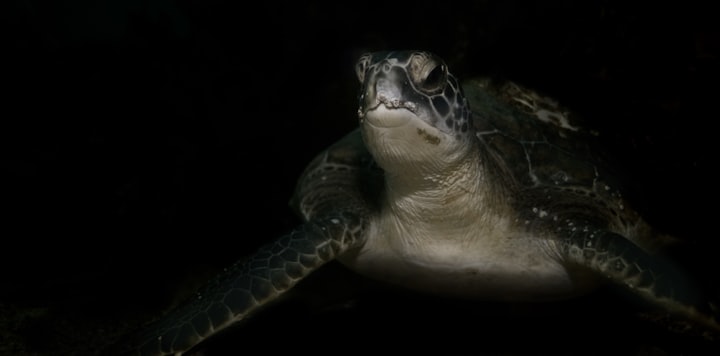
The history of turtles is a fascinating journey that spans millions of years. Turtles are reptiles known for their unique and protective shells, which have made them one of the most distinctive and recognizable groups of animals on Earth. Here's a brief overview of their evolutionary history:
Ancient Origins (Triassic Period):
Turtles have a long evolutionary history that dates back to the late Triassic period, around 220 million years ago. The earliest known turtle-like reptiles, such as Proganochelys, had a partial shell formed by bony plates on their belly and back. These early turtles were terrestrial and aquatic, and their shells likely provided some protection from predators.
Diverse Evolution (Jurassic to Cretaceous Periods):
During the Jurassic and Cretaceous periods, turtles underwent significant diversification. Some evolved into large marine species, like the sea turtles we have today. Others remained terrestrial or adapted to freshwater environments. Turtles developed more advanced shell structures, with some species having fully enclosed shells.
Mass Extinction Events (Late Cretaceous Period):
Turtles, like many other species, were affected by the mass extinction event that occurred at the end of the Cretaceous period, around 66 million years ago. Despite the catastrophic events that wiped out many species, some turtle lineages survived and continued to evolve.
Modern Turtles (Cenozoic Era):
The Cenozoic era saw the emergence of modern turtle families. Tortoises, with their distinctive land-dwelling adaptations, appeared during this time. Turtles continued to adapt to various environments, including freshwater and saltwater habitats. Some species evolved specialized traits, such as the elongated neck of the giraffe-necked turtle and the powerful jaws of snapping turtles.
Conservation Challenges (Recent History):
In recent history, turtles have faced various conservation challenges. Habitat loss, pollution, and overexploitation for the pet trade and traditional medicine have threatened many turtle species. Efforts to protect and conserve turtles have been ongoing, with organizations and governments working to ensure the survival of these unique creatures.
Modern Turtles (Today):
Today, there are around 360 recognized species of turtles, divided into two main groups: tortoises and turtles. Tortoises are primarily land-dwelling, while turtles can be found in freshwater, saltwater, and terrestrial environments. Sea turtles, in particular, are well-known for their long migrations between feeding and nesting grounds.
Turtles are remarkable survivors with a rich evolutionary history that spans hundreds of millions of years. Their unique anatomy and adaptations have allowed them to thrive in various ecosystems, from deserts to oceans. However, many species are still at risk due to human activities, highlighting the importance of conservation efforts to protect these ancient and fascinating creatures.
As of my last knowledge update in September 2021, there are approximately 360 recognized species of turtles worldwide. These species are categorized into two main groups:
Tortoises: Tortoises are land-dwelling turtles. They are typically herbivorous and adapted for life in terrestrial environments. Tortoises are known for their dome-shaped shells and are found in various parts of the world, including North America, South America, Africa, Asia, and the Galapagos Islands.
Turtles: Turtles, in a broader sense, encompass all members of the Testudines order, which includes both terrestrial and aquatic species. Turtles can be further divided into various subgroups based on their habitat and physical characteristics:
Sea Turtles: These are marine turtles that spend most of their lives in the ocean. There are several species of sea turtles, including the loggerhead, leatherback, green turtle, hawksbill, and Kemp's ridley.
Freshwater Turtles: These turtles primarily inhabit freshwater environments such as ponds, lakes, rivers, and swamps. Examples of freshwater turtles include painted turtles, snapping turtles, and terrapins.
Box Turtles: Box turtles are a subgroup of terrestrial turtles known for their hinged shells, which allow them to completely close themselves inside for protection. They are found in North America and parts of Asia.
Softshell Turtles: Softshell turtles have leathery shells instead of the typical hard, bony shells seen in other turtle species. They are adapted for an aquatic lifestyle and are found in various parts of the world.
Musk Turtles: Musk turtles, also known as stinkpots, are small freshwater turtles found in North America. They are named for their ability to emit a foul-smelling musk when threatened.
About the Creator
Burim Dedushi
Writing is my passion, it calms the soul and relaxes the mind





Comments (1)
Wow, you have shared an informative piece about creatures I love. Near our last home, they raised Western Pond Turtles in a secret location because they are endangered. In 2022, we were privileged to visit the Galapagos and see the sea turtles there, but fantastically, the enormous land tortoises! The Big Island in Hawaii has large sea turtles everywhere near the coastline in any tide pool, so wonderful.